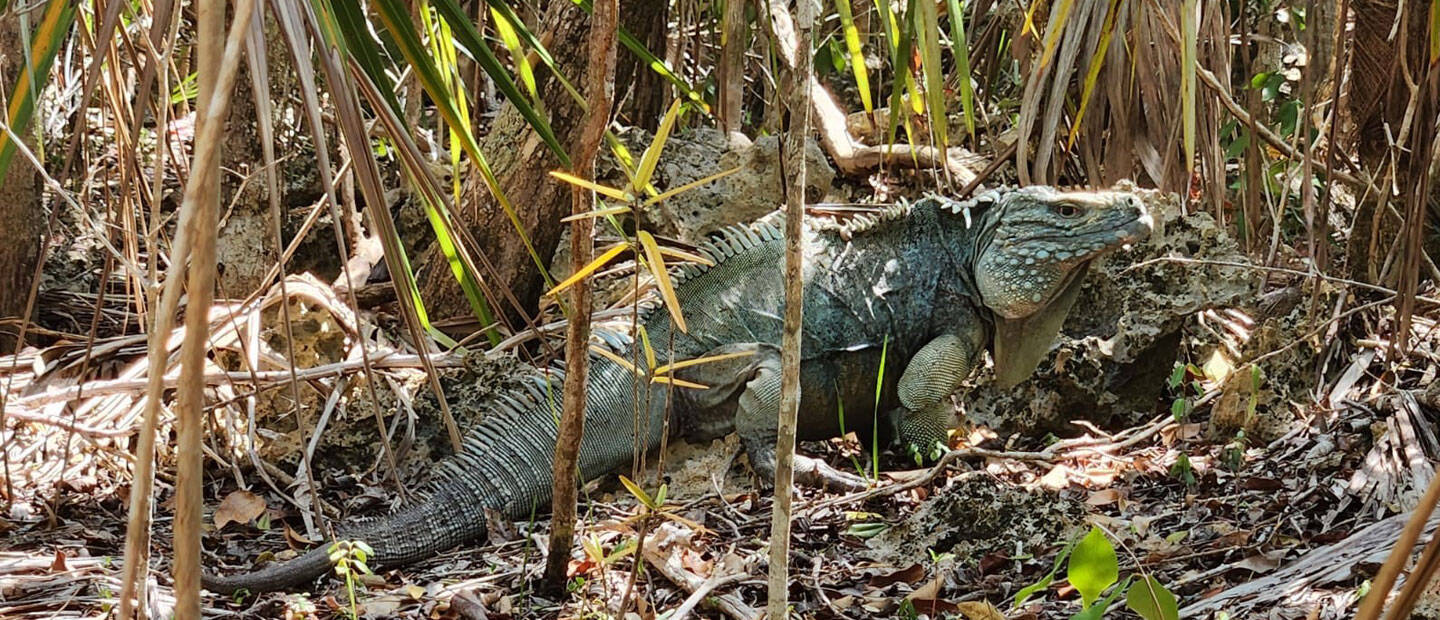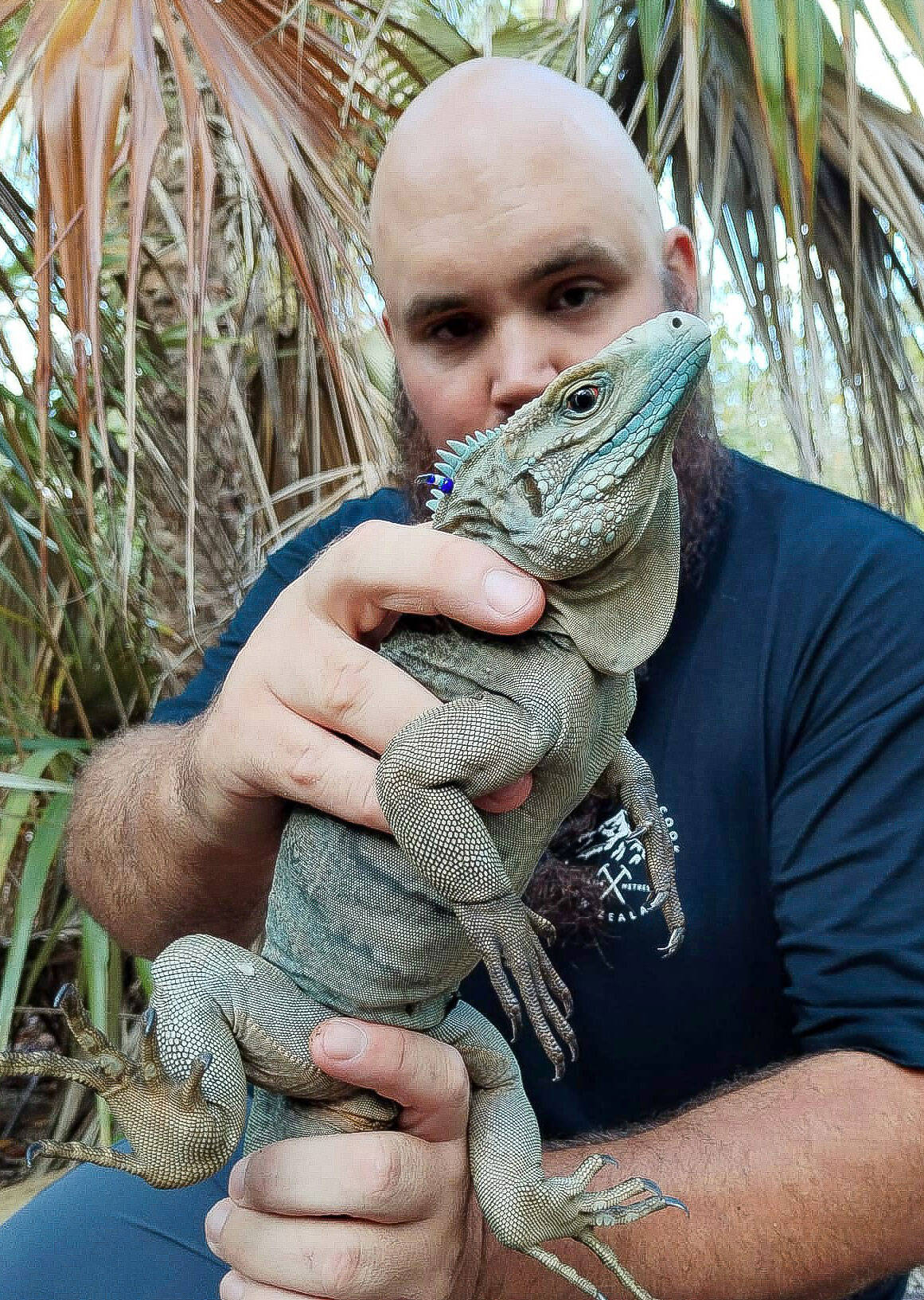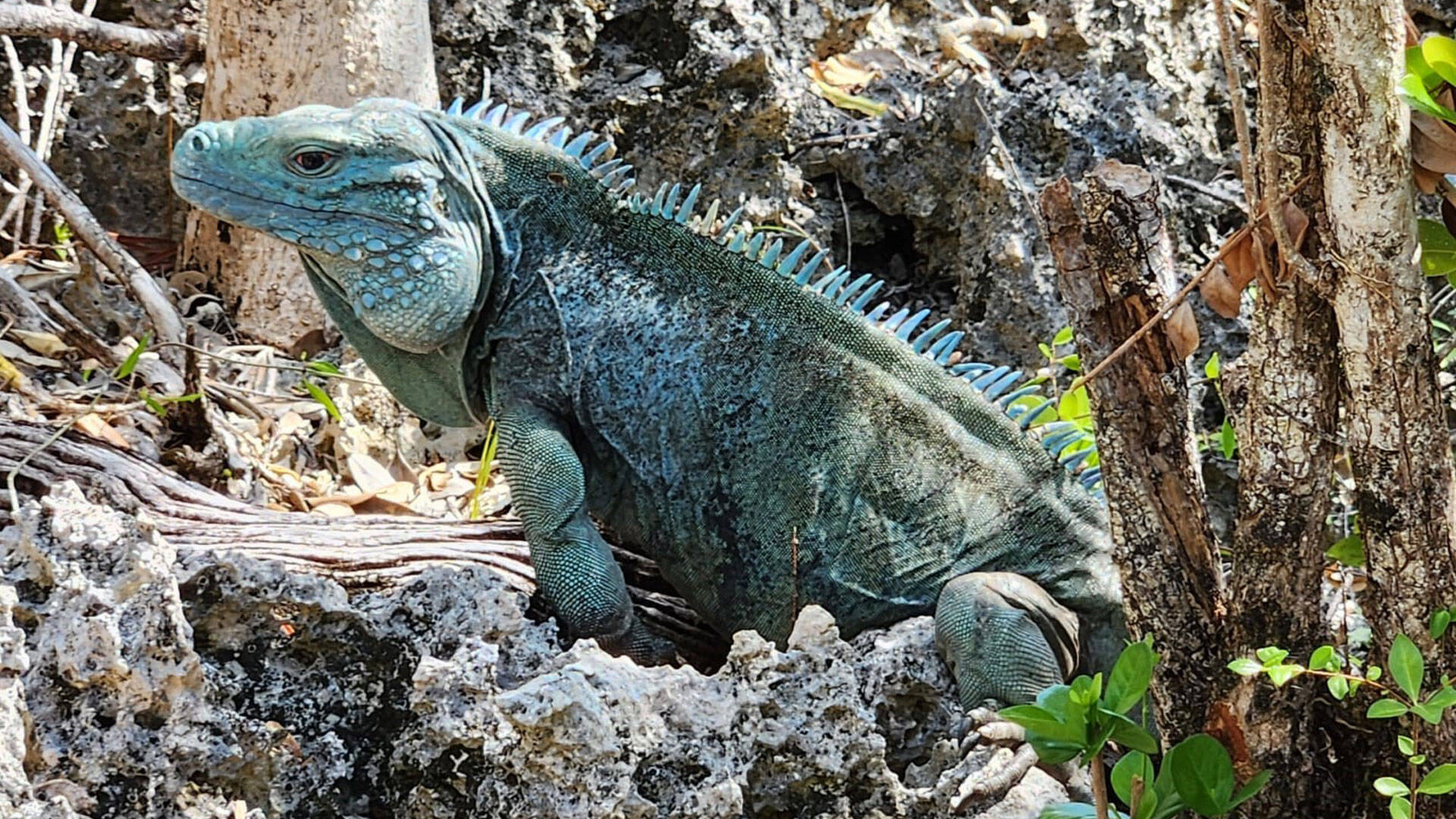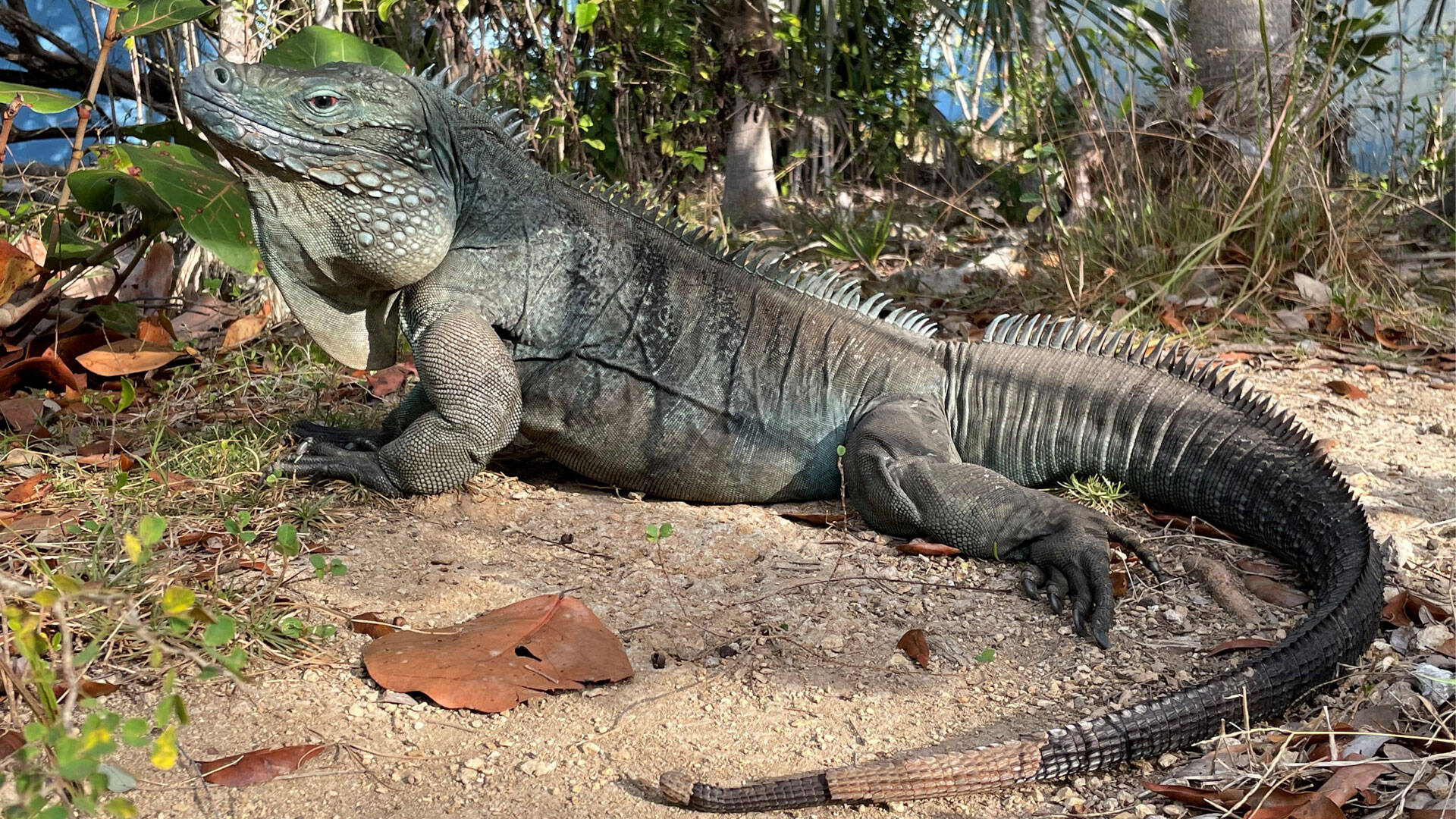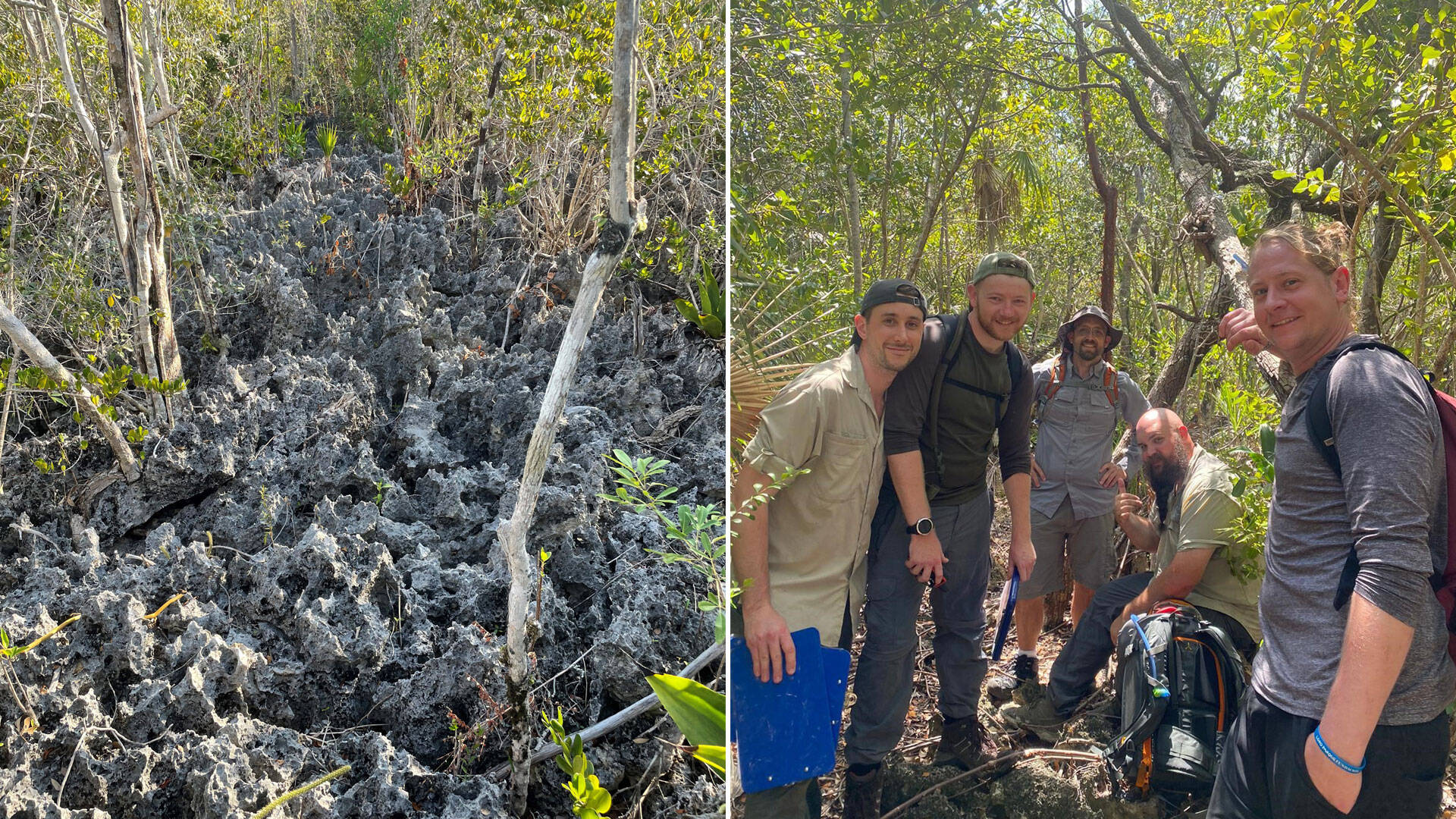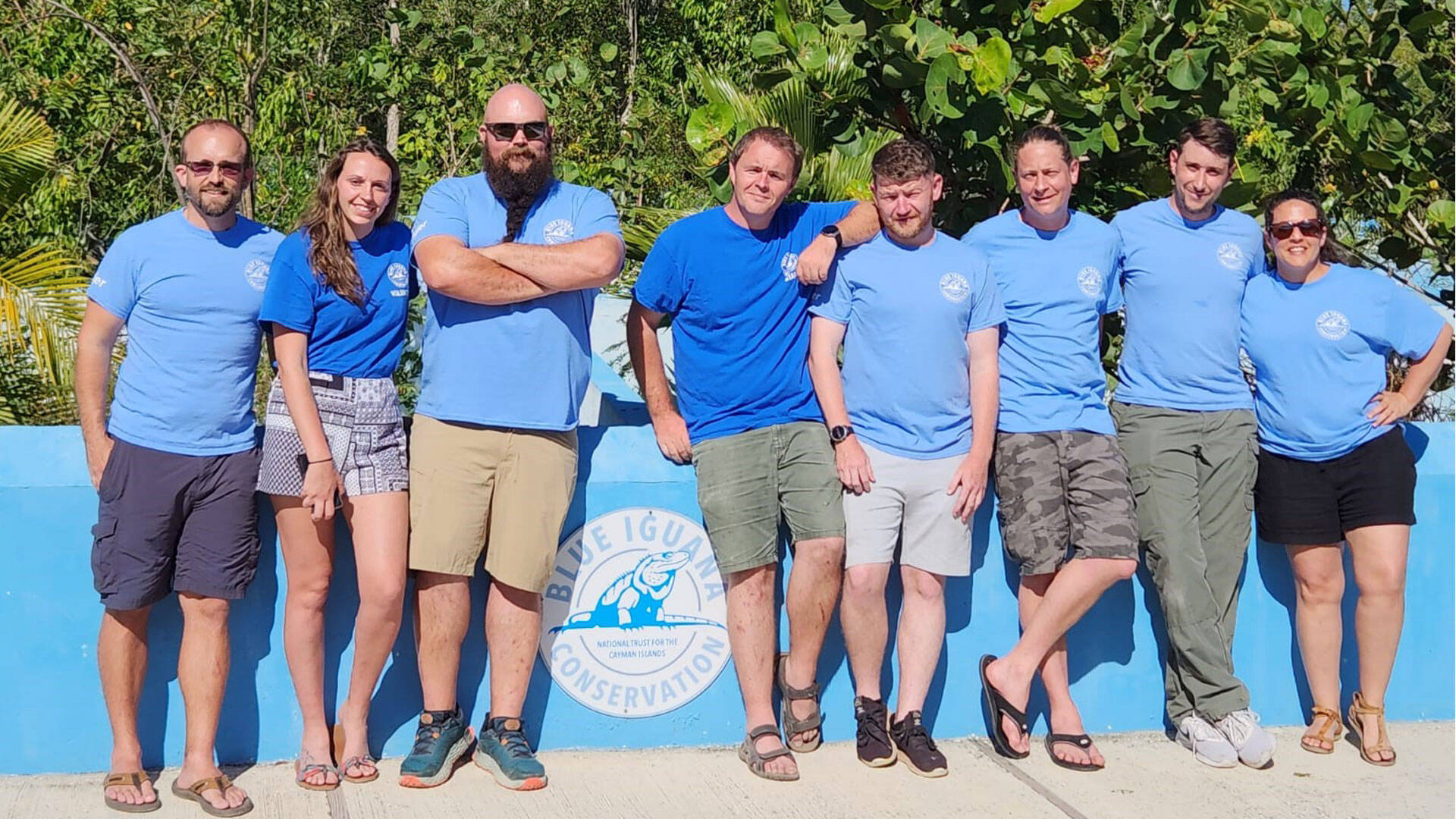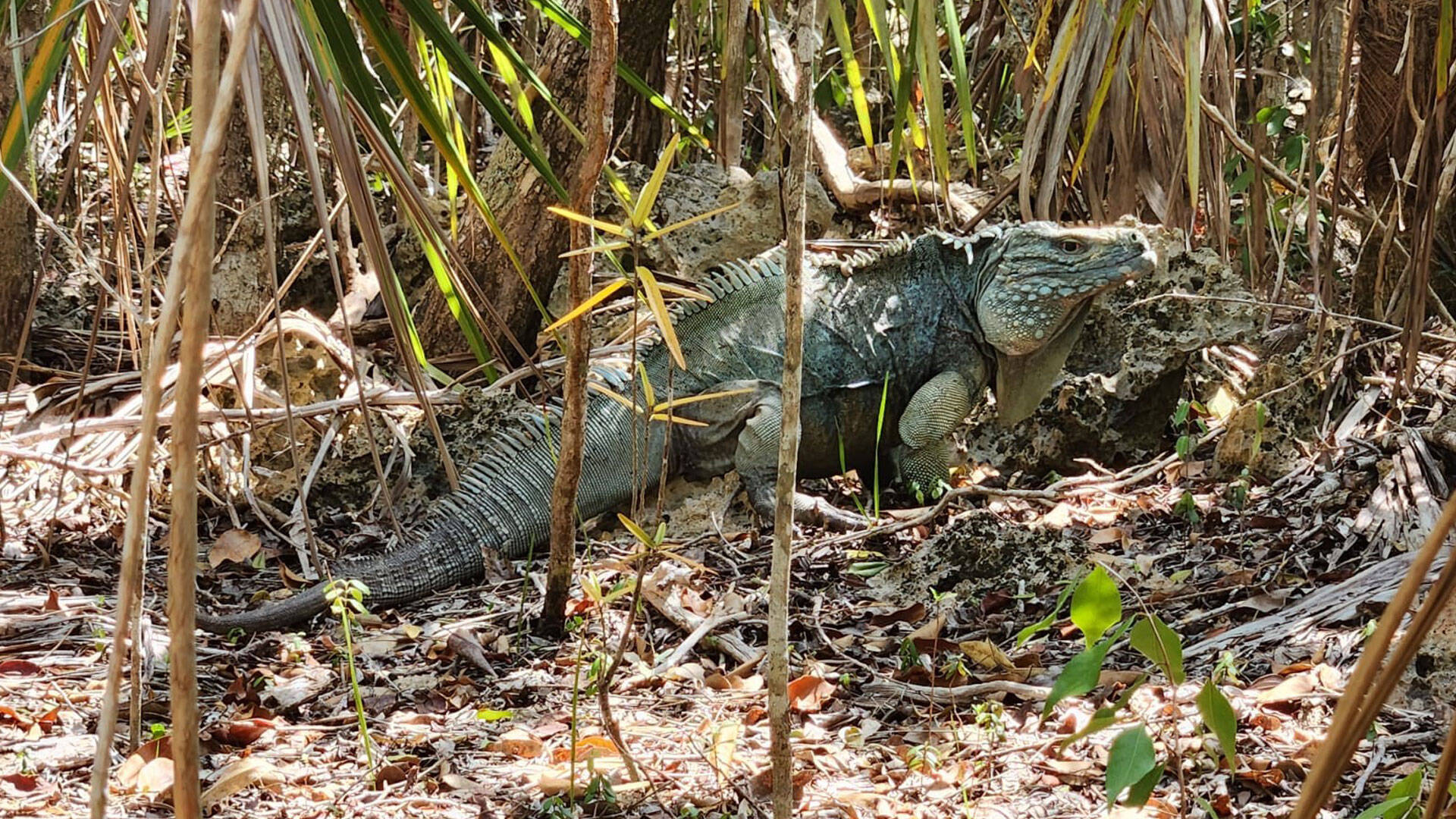For the blue iguana that do survive, there is a raft of compounding issues, such as competition for resources from introduced grazing animals like goats and non-native iguanas. Fortunately, once they reach three years of age, they can see off most predators, except for dogs.
A gate-crasher to this island paradise is the green iguana (Iguana iguana), native to Mexico, Central and South America. It was introduced to these islands in the 1990s for the pet trade and as a food source for locals. Their introduction caused issues on multiple fronts; they not only compete for the same land and food resources as the endemic blue iguana, but they also harbour a deadly bacteria in their mouths - Helicobacter. While green iguanas have evolved to live with this bacteria, it proves fatal for blue iguanas who come into contact with it.
In 2018, the Cayman Island’s Department of Environment coordinated an initiative to reduce green iguana populations on the islands, providing training for local Caymanians in humane culling practises. Within three years, the programme successfully removed a total of 1.2 million green iguanas across the islands and it was estimated that just 25,000 remained. Unfortunately, due to a variety of factors including interruptions during the COVID-19 pandemic, the green iguana population has increased again, to around 87,000 individuals, and new creative methods are needed for halting their population growth.


